10 Animals Found In Romania
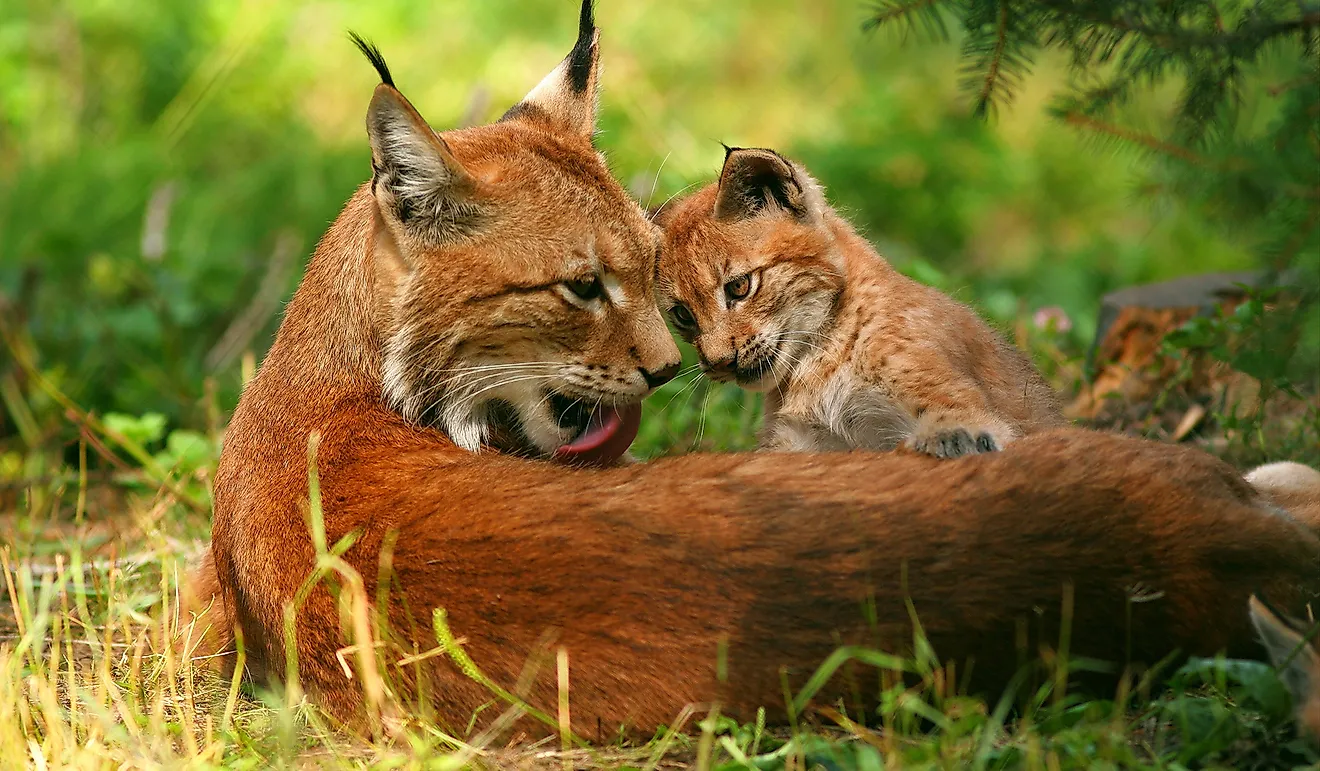
Located near the convergence of Central, Eastern, and Southeastern Europe, Romania is a country that is home diverse fauna including forest animals, birds, marine animals, and insects. Most animals in Romania inhabit the mixed and temperate broadleaf forests of the mountains. Although there is a favorable climate for about 90 mammalian species, some are classified as nearly threatened or critically endangered. The southern plains are inhabited by rodents such as the Romanian hamster and European mole, while larger mammals such as the grey wolf, brown bear, and European bison inhabit the vast forests within the mountains. The Danube Delta is perhaps the largest and most impressive animal reserve in Europe, and was declared a UNESCO World Heritage Site in 1991. Despite being a member of the Berne Convention on the Conservation of European Wildlife and Natural Habitats, Romania has lagged behind in protecting the ecosystem from invasive species. There are approximately 390 terrestrial and over 102 marine alien species in the country, most of which were introduced accidentally from Southeast Asia and North America. Licensed hunting is permitted in Romania, and the most hunted animals include wild boars, roe deer, and red deer. In 2016, the government banned the hunting of wild cats, wolves, lynx, and brown bears, but suspended the ban a year later.
Lynx
The lynx is a shy feline that avoids contact with other animals. It was previously distributed throughout Europe, but is currently confined to regions where human populations are low and sparse. Romania has the second largest population of lynx, after Russia, as a result of protection laws. The lynx prefers habitats with vast coniferous woods such as the Carpathian, Retezat, Fagaras, Apusani, and Gurghiu Mountains. It feeds on birds and fairly large mammals, such as rabbits, hares, red foxes, red deer, and young moose. During the summer, the species preys on stray domestic sheep that venture into their habitats. Grey wolves and bears do not actively hunt the lynx, but encounters are deadly.
Brown Bear
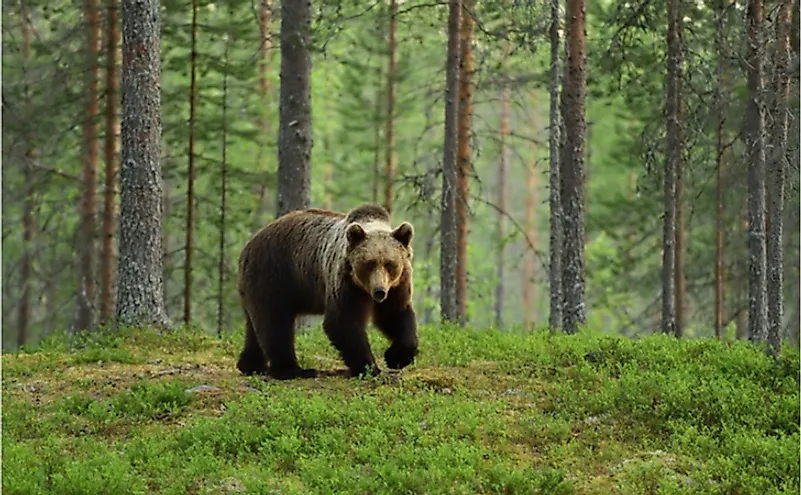
Before the mid-nineteenth century, brown bears lived throughout the wilderness of Romania, from the mountain peaks to the southern plains and the Danube Delta. Since then, livestock and agricultural farming have taken up much of the brown bear's historical range. Nevertheless, Romania has one of the largest populations in Europe, consisting of about 6,000 individuals. Most inhabit the Carpathian Mountains, where food is plentiful and the rocky terrain provides dens for hibernation. Large populations are found in Cheile Bicazului – Hășmaș, Cheile Nerei – Beușniț, and Călimani national parks. Brown bears are aggressively territorial and defensive, and will attack whenever threatened.
European Bison
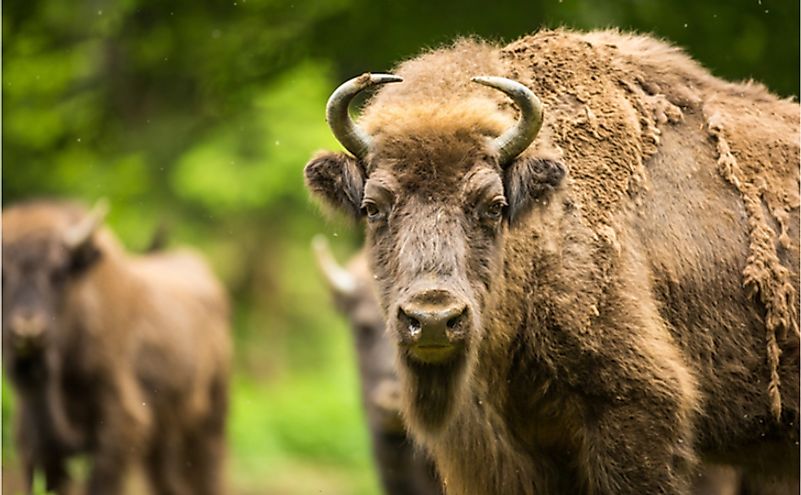
The European bison is one of two bison species, the other being the American bison. The wild population was hunted to extinction in the 20th century, with the last wild bison killed in Białowieża Forest in 1921. European bisons in captivity were successfully bred and reintroduced into the forests of several countries, where populations have continued to rise over time. Nevertheless, they remain an endangered species. The Romanian population has proved successful, with more than 100 individuals roaming the Vânători Neamț, Țarcu Mountains, and Poiana Ruscă Mountains. They live in herds and prefer habitats that contain shrubs and grass.
Chamois
The chamois is a goat-antelope native to numerous mountains in Europe, including the Pyrenees, European Alps, Tatra Mountains, and the Carpathians. The species has also been introduced to some islands of New Zealand. They inhabit moderately high altitudes but prefer rocky and rugged terrain away from predators. Males remain solitary until breeding season, but females and their young live in herds of about 20 individuals. The Romania's chamois population is found in Piatra Craiulu, Ceahlau, Făgăraș Bucegi mountains, and the Cheile Bicazului – Hășmaș National Park. The chamois is a popular game animal since its meat is considered flavorful. The tuft of hair on its back necks is used to decorate hats.
Dalmatian Pelican
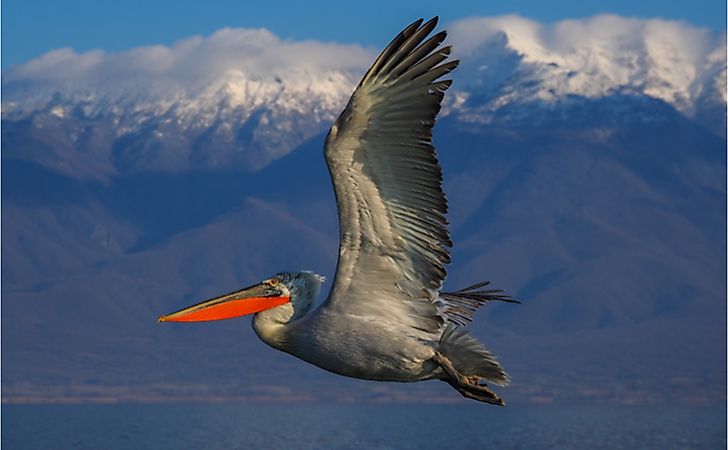
The Dalmatian pelican is perhaps the largest freshwater bird, although it is challenged by larger swans. In fact, the species has a wingspan that rivals the great albatross. The pelican migrates to the Danube Delta in March and then leaves in late August. Before the 20th century, the population of the Dalmation pelican numbered into millions in Romania alone, but has since declined worldwide due to habitat loss. In fact, there are less than 1,000 individuals left in the Danube Delta, and the Dalmatian pelican is protected throughout Europe. Breeding areas in Romania, Bulgaria, Turkey, and Greece are protected from human activities and invasive bird species. The pelicans feed on small aquatic animals, especially fish and amphibians.
Danube Delta Horse
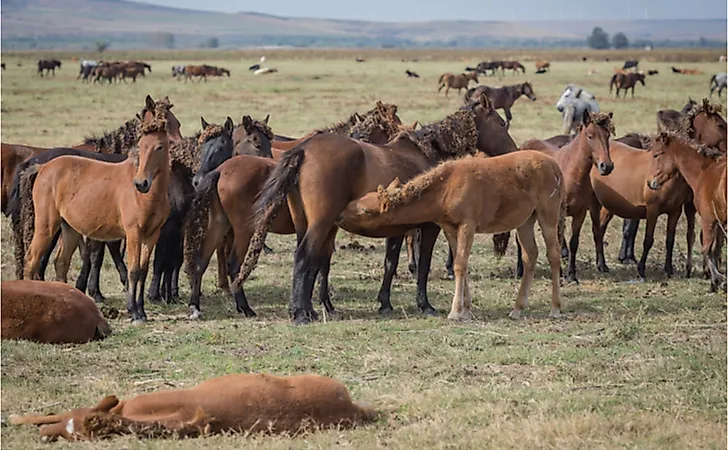
The Danube Delta and Letea Forest in Romania are home to some of the last remaining wild horses in Europe. The more than 4,000 feral horses can be seen grazing in herds, and are accustomed to people but will run when startled. Although the wild horses have existed in the region for hundreds of years, their population increased significantly after the collective farms were shut down in the 1990s, and the horses were freed. The number of feral horses in the region has raised concern over overgrazing and is creating an ecological problem. The animals cannot be translocated to other areas since many are infected with equine anemia.
Horned Viper
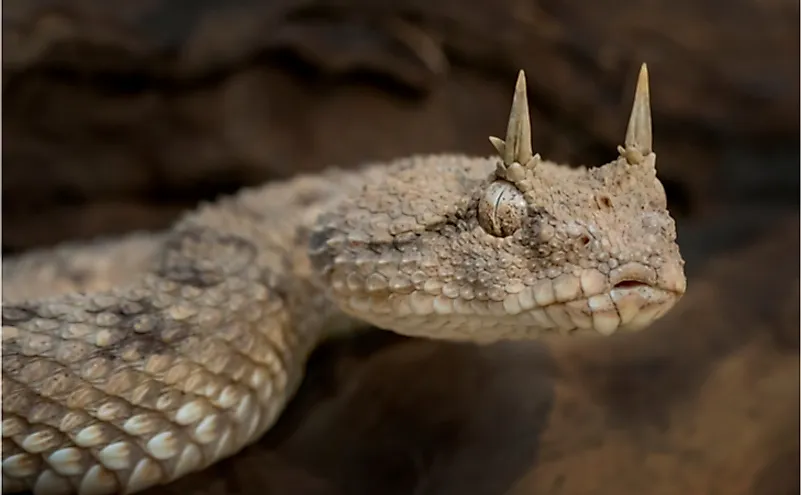
The horned viper is a venonous snake and the largest of the European vipers. Two soft horns above its head distinguish the horned viper from other vipers. As cold-blooded animals, they spend much of the day basking in the sun on rocks or tree branches. The species inhabits the mountainous regions of Romania, including the Retezat Mountains, and typically nest along river banks. Horned vipers are among the most poisonous snakes in Romania.
Romanian Hamster
The Romanian hamster is a small hamster that inhabits Romania and Bulgaria. It is a nocturnal rodent that feeds on small insects, herbs, vegetables, and seeds. The species builds complex underground burrows with outlets in hilly areas and pristine plains, and some tunnels end up in orchards, vineyards, and gardens. With only about 3,000 individuals remaining in Romania, the species is classified as near endangered.
Carpathian Wild Boar
The Carpathian wild boar is an incredibly adaptive animal with a habitat that ranges from the high altitudes of Carpathian forests to the swamps of the Danube Delta. During the winter season, the boar can walk up to 30 miles each night in search of food. The population of wild boars in Romania is strong, and therefore licensed hunting is permitted. The boars will feed on many parts of a plant, preferably tubers, rhizomes, bulbs, berries, nuts, and leaves. When food is scarce in the forest, the Carpathian wild boar will invade farmlands.
Grey Wolf
The grey wolf is found in North America and Eurasia and is the largest member of the wolf family. There are about 2,500 wolves in Romania, where they are the apex predator of the Carpathians and hold the key to interrelated ecosystems. Grey wolves live in packs of related members, and help regulate the population of wild boar and red deer.











